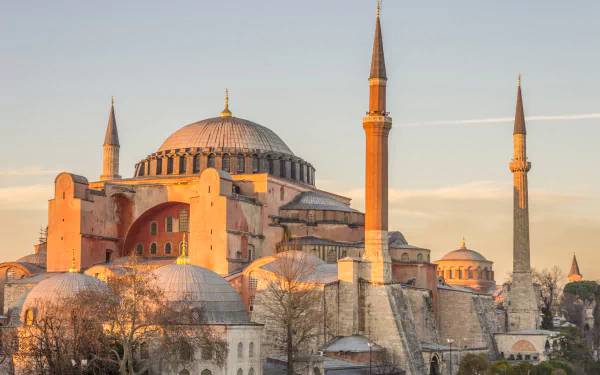Download Mosque Wallpapers
Download Mosque Wallpapers,
Mosques (Mosque), which are accepted as holy places by 2 billion Muslims around the world, are works of art with a very magnificent appearance. As the Softmedal team, we present you the pictures of the most beautiful mosques in the world, which took years to build, with the Mosque Wallpapers archive that we created. By downloading the Mosque Wallpapers archive for free with Softmedal quality, you can download and view the mosque wallpaper images, which are considered sacred for Muslims, to your desktop.
Download Mosque Wallpapers
Mosque (Mosque) is the name given to the great temples where Muslims perform their five daily prayers, Friday and Eid prayers and worship together.
A mosque (Mosque) is a temple with a minaret, where Muslims gather to worship and appeal to approximately 2 billion Muslims around the world. In its most developed state, it consists of two parts, the inner courtyard with a fountain located in the middle of a large outer courtyard and the main structure with a dome. The dictionary meaning of mosque is Madrasa. Muslims gather at the mosque five times a day at prayer times, as well as on Eid mornings and Friday prayers. There is no obligation to perform daily prayers in the mosque; but Eid and Friday prayers are performed in congregation (collectively) and in the mosque.
Mosques have some common features. Almost every mosque is located in the middle of an "outer courtyard". This courtyard is usually surrounded by a low wall, the windows of which are decorated with bars. It has several doors opening in various directions. In some mosques, there is a residence called "meşruta" for imams in the outer courtyard. The "inner courtyard", which is entered through other auxiliary gates with a large gate, is between the outer courtyard and the main building.
The inner courtyard or harem is surrounded by a colonnaded gallery on the inside. These galleries are called "porticos". There is a fountain in the middle for ablution. The portico of the courtyard, which extends along the entrance to the mosque, is called the "last congregation place". Again, the main prayer section, which is passed through a large door, is generally called "harim" or "sahın". In the middle is the wider "middle nave", the very middle part of which is called the "under-dome", and the ones on the sides are called "side aisles".
The "mihrab", which shows the direction of worship, is like a hollow cell on the qibla walls. The place in front of the mihrab, slightly higher than the main floor of the mosque, is called the "mihrab bench". On the right side of the mihrab, there is a "mimber" with a ladder for reciting the sermon, and a "preacher pulpit" on the left, which is also reached by a few steps. In Selatin mosques, there is a "hunkars mahfili" in the southeast corner, which resembles a lodge. Here the rulers used to pray.
In addition, there are sections such as the "womens mahfili" reserved for women and the "muezzin mahfili" for muezzins inside the mosque. The "minaret", where the call to prayer is recited from its balcony, called "Şerefe", is an important part of the mosque. Some mosques have two or more minarets. In mosques with more than one minaret, "ridges" are set up between the minarets on oil lamps and feast days.
Ancient mosques were not usually the only structures. It is translated as a whole or a part of buildings such as madrasah, library, fountain, public bath, soup kitchen, primary school, hospital, burial ground (cemetery), and this group of buildings is called "kulliye". The first mosque was built of mud brick in the village of "Quba", between Mecca and Medina, during the Migration. Later, the courtyard of the Prophets house in Medina was used as a mosque. It had no minaret. The muezzin stood on a high stone and recited the call to prayer.
During the Umayyad period, mosques were built in the real sense. The most famous of these is the Omar Mosque in Jerusalem, built in 691. This is followed by Masjid-ul-Aqsa, built in 702. Although mosque architecture gave good examples during the Abbasids, Fatimids and Anatolian Seljuks periods, the most magnificent mosques are encountered during the Ottoman period. Ulu Mosque in Bursa (1399), Yeşil Mosque (1424), Beyazıt Complex (1488), Selimiye Complex (1575), Fatih Mosque in Istanbul (1470), Beyazıt Mosque (1505), Şehzade Mosque (1548), Süleymaniye Mosque (1557) are important examples of Ottoman period mosques.
You can access the worlds most beautiful Mosque Wallpapers images with a single click, and you can download them for free as an archive without having to download them one by one.
Mosque Wallpapers Specs
- Platform: Windows
- Category: App
- Language: English
- File Size: 37.58 MB
- Licence: Free
- Developer: Softmedal
- Latest Update: 05-05-2022
- Download: 1






